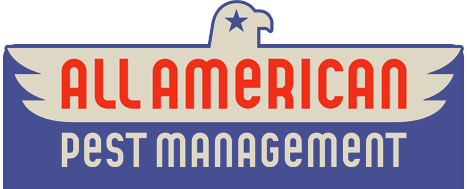Pantry Pest Tips!
Pantries are a highly sought after amenity in homes because they offer a ton of storage for your kitchen staples. But, one of the downsides of having a pantry is that it can attract an entirely new set of pests to your home. Pantry pests are a group of insects that have an appetite for the dried and processed food products that are stored in your home. Pantry pests are not only nuisances, but they can be harmful to your family, so it’s important that you know what types of pantry pests are likely to move into your home, what attracts them, and ways that you can get rid of them.
There are two main types of pantry pests: moths and beetles. The four culprit species are as follows:
Indian Meal Moth
Indian meal moths are small with a copper and whitish-gray appearance and reddish-brown wings. Once these pantry pests are in your home, it is incredibly difficult to get rid of them. Interestingly, the meal moth’s larvae are responsible for all the damage caused to food and they feed on a wide variety of dried food products.
Flour Beetle
Adult flour beetles are slender insects that are reddish-brown in color. The adults and larvae of this species of pantry pest are typically found in dried food products like flour, cereal, dried pet food, and dog treats.
Saw-toothed Grain Beetle
Saw-toothed grain beetles are slender, flat, brown beetles that have six saw-like tooth projections on each side of their thoraxes. Both the larvae and adults feed on loose or open products like flours, cereals, candies, dried fruit and more.
Cigarette beetle
Cigarette beetles are light brown insects that have a “hump-backed” appearance, smooth wing covers and body hairs. Although they are named for their behavior of feeding on cured tobacco and cigarettes, the cigarette beetle is most found in pet foods, cereals, nuts, and candy.
The main thing that attracts these pests is open, unattended dry food products, like cereal, pet food, flour, grains, bread, and more. They typically enter your home through windowsills and open doorways and their sense of smell leads them directly to your pantry. They can also enter your home through already-contaminated food that you buy from the store.
The best way to avoid getting pantry pests is to practice healthy sanitation with your dried food products. Before you purchase an item from the store, check to make sure that there aren’t any rips or tears in packaging and other signs of infestations. Also, avoid buying food in bulk and storing large quantities of products in the pantry. Instead, purchase items when you need them and store the products in airtight, insect-proof containers. Lastly, if you notice that you have an infestation, dispose of any of the affected food and put it outdoors immediately.
If you notice that your pantry pest problem isn’t going away, even after you’ve sanitized everything, it may be time for you to call in the experts. Pest control companies, like All American Pest, are trained to locate and eliminate pests from your home.





